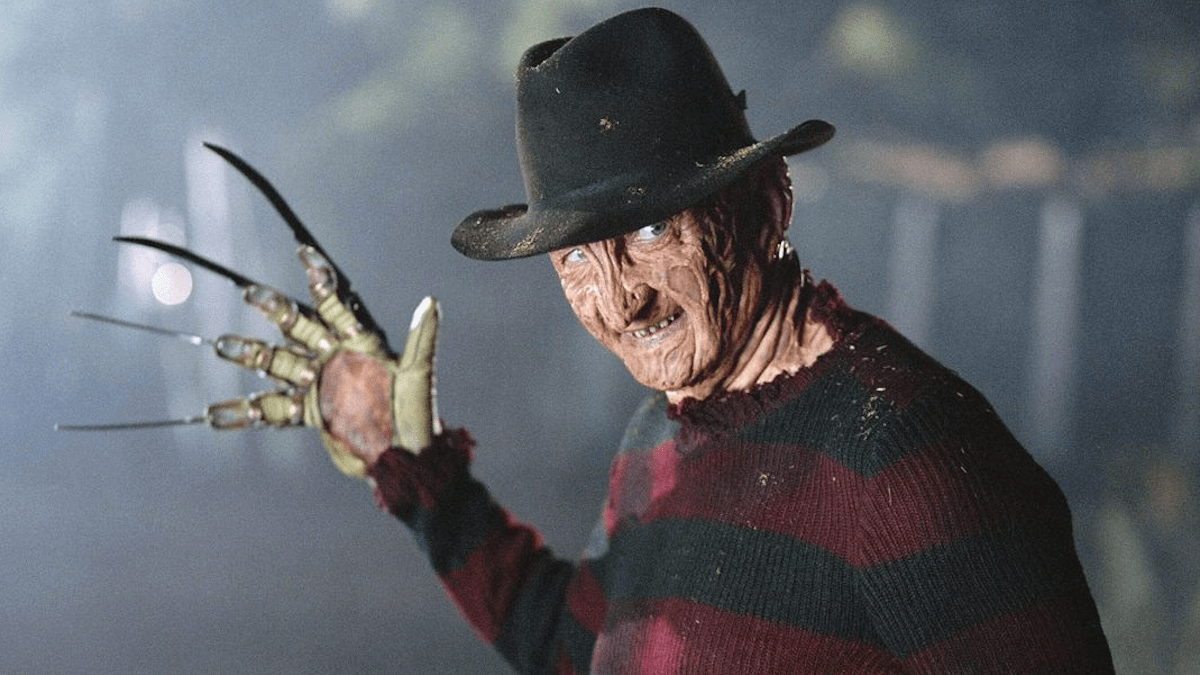The slasher boom that followed the massive success of John Carpenter’s Halloween in 1978 gave birth to countless similar titles, many of which were terrible. Throughout the course of the next decade, you could barely turn around in a movie theater without bumping into some kind of homicidal maniac, but arguably only Friday the 13th‘s Jason Voorhees and A Nightmare on Elm Street‘s Freddy Krueger joined Michael Myers in becoming bona fide pop culture icons.
Jason and Michael were usually depicted as the hulking silent types, but Freddy was different. Sure, he was as terrifying as you’d expect a horribly scarred and disfigured child murderer who stalks the dreams of his victims to be, but thanks to Robert Englund’s performance, he was also a hugely charismatic presence.
However, the fedora wearing murderer only has a meagre seven minutes of time on screen in Wes Craven’s classic original, despite being the driving force of the entire narrative, as well as the movie’s major selling point. Of course, in the horror genre, less is often much better than more to have the audience let their imaginations do the work, and that certainly helped make Freddy such an effective presence in A Nightmare on Elm Street.
As ScreenRant explains:
It makes sense that Craven would treat his killer like other monsters in horror for the first outing — he likely wanted to leave as much to imagination as possible. By keeping the villain hidden, or largely in shadow, it keeps the audience from getting desensitized and helps keep them scared. Leaving a lot to the imagination when it comes to villains is a traditional technique for most horror movies, helping to ramp up the fear in stories by focusing on either human or creature-type monsters. It can also be a great technique for lower-budget movies to help hide imperfections in their special effects and makeup, so it makes sense that director Wes Craven would have written the first Nightmare on Elm Street movie this way.
Of course, it was ultimately the overwhelmingly positive reception to the character that saw Freddy bumped up to center stage for the onslaught of sequels, and he was soon a smart-mouthed, sarcastic and often surprisingly funny antagonist, helped in no small part by Englund’s consistently great work under the makeup. After all, if a less committed and capable actor had been hired in the first place, then the entire A Nightmare on Elm Street franchise could have turned out very differently.












Published: Nov 28, 2020 03:25 pm